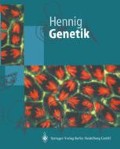Überblick
Die Chromosomentheorie der Vererbung besagt, daß die Chromosomen die Träger der Gene sind. Bedeutet das, daß sie lediglich eine Ansammlung kettenartig aneinandergefügter Gene sind, oder haben sie noch andere Aufgaben zu erfüllen?
Aus allen cytologischen Beobachtungen müssen wir schließen, daß Chromosomen übergeordnete Funktionen in der Zelle erfüllen müssen. Eine offensichtliche Aufgabe besteht darin, für die geregelte Verteilung der Gene in Mitose und Meiose zu sorgen. Hierfür besitzen sie besondere chromosomale Domänen, die Centromerenbereiche. Auch bei der DNA-Replikation haben sie eine wichtige Aufgabe zu erfüllen. Sie müssen dafür sorgen, daß Gene in terminalen Positionen unbeeinträchtigt erhalten bleiben. Der normale Replikationsmechanismus linearer DNA-Moleküle führt nämlich in jedem Replikationszyklus zu einer Verkürzung der DNA-Doppelhelix an den Enden. Diesem Problem wird von den Chromosomen durch die Entwicklung besonderer terminaler Domänen, der Telomeren, entgegengewirkt.
Weitere Eigenschaften der Chromosomen schließen die der zeitweiligen oder permanenten Inaktivierung einzelner Chromosomen oder die Bindung von Proteinen während bestimmter Phasen des Zellzyklus ein. Chromosomen sind also dynamische Strukturen, die strukturell und funktionell eng mit dem Stoffwechsel der Zelle verbunden sind.
Trotz dieser allgemeinen Bedeutung der Chromosomen ist über ihre Feinstruktur wenig bekannt. Wie ist ein mehrere Zentimeter langes DNA-Molekül in einem nur wenige Mikrometer großen Zellkern untergebracht? Wir wissen, daß die chromosomale DNA in einer ersten Verpackungsstufe in der Form von kompakten Nukleosomen organisiert wird. Sie windet sich hierzu zweimal um einen Komplex aus Histon-proteinen. Eine Kette derartiger DNA-Histon-partikel formt eine Chromatinfibrille von 10 nm Durchmesser. Diese Fibrille wird jedoch zusätzlich in Fibrillen höherer Ordnung organisiert, über deren Struktur wir im Einzelnen nur wenig wissen.
Access this chapter
Tax calculation will be finalised at checkout
Purchases are for personal use only
Preview
Unable to display preview. Download preview PDF.
Literaturverzeichnis
Weiterführende Literatur
Biessmann H, Mason JM (1992) Genetics and molecular Biology of telomeres. Adv Genet 30: 185–249.
Blackburn EH (1990) Telomeres and their synthesis. Science 249: 489–490.
Blackburn EH, Szostak JW (1984) The molecular structure of centromeres and telomeres. Ann Rev Biochem 53: 163–194.
Clark DJ, Felsenfeld G (1992) A nucleosome core is transferred out of the path of a transcribing polymerase. Cell 71: 11–22.
Earnshaw WC, Bernat RL (1991) Chromosomal passengers: Towards an integrated view of mitosis. Chromosoma 100: 139–146.
Haaf T, Warburton PE, Willard HF (1992) Integration of human α-satellite DNA into simian chromosomes: Centromere protein binding and disruption of normal chromosome segregation. Cell 70: 681–696.
Kornberg R, Lorch Y (1991) Irresistible force meets immovable object: transcription and the nucleosome. Cell 67: 833–836.
Matson SW, Kaiser-Rogers KA (1990) DNA helicases. Ann Rev Biochem 59: 289–329.
McClintock B (1941) The stability of broken ends of chromosomes. Genetics 26: 234–282.
Miller OL Jr, Beatty BR (1969) Visualization of nucleolar genes. Science 164: 955–957.
Nathmyth KA (1983) Molecular analysis of a cell lineage. Nature 302: 670–676.
Osheim YN, Miller OL Jr (1983) Novel amplification and transcriptional activity of chorion genes in Drosophila melanogaster. Cell 33: 543–553.
Osheim YN, Miller OL Jr, Beyer AL (1986) Two Drosophila chorion genes terminate transcription in discrete regions near their poly(A) sites. EMBO J 5: 3591–3596.
Rattner JB (1992) Integrating chromosome structure with function. Chromosoma 101: 259–264.
Ruskin B, Zamore PD, Green MP (1988) A factor, U2AF, is required for U2 snRNP binding and splicing complex assembly. Cell 52: 207–219.
Saitoh H, Tomkiel J, Cooke CA, Ratrie H, Maurer M, Rothfield NF, Earnshaw WC (1992) CENP-C, an autoantigen in scleroderma, is a component of the human inner kinetochore plate. Cell 70: 115–125.
Strathern JN, Klar AJS, Hicks JB, Abraham JA, Ivy JM, Nasmyth KA, McGill C (1982) Homothallic switching of yeast mating type cassetts is initiated by a doublestranded cut in the MAT locus. Cell 31: 183–192.
Thommes P, Hübscher U (1992) Eukaryotic helicases: Essential enzymes for DNA transactions. Chromosoma 101: 467–473.
Author information
Authors and Affiliations
Rights and permissions
Copyright information
© 1995 Springer-Verlag Berlin Heidelberg
About this chapter
Cite this chapter
Hennig, W. (1995). Molekulare Struktur eukaryotischer Chromosomen. In: Genetik. Springer-Lehrbuch. Springer, Berlin, Heidelberg. https://doi.org/10.1007/978-3-662-07432-9_10
Download citation
DOI: https://doi.org/10.1007/978-3-662-07432-9_10
Publisher Name: Springer, Berlin, Heidelberg
Print ISBN: 978-3-662-07433-6
Online ISBN: 978-3-662-07432-9
eBook Packages: Springer Book Archive

